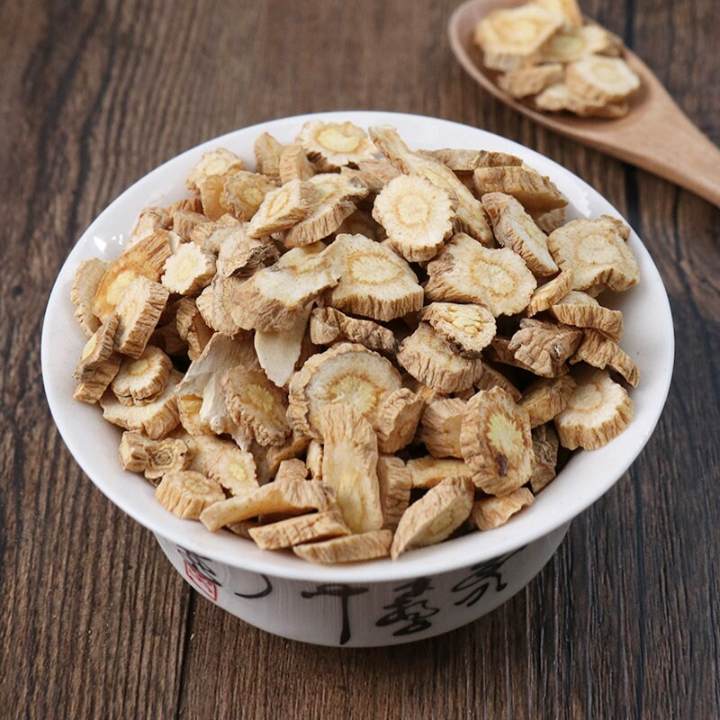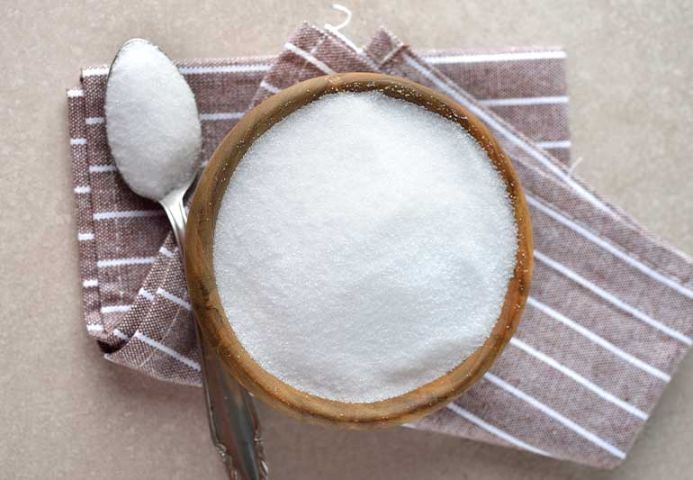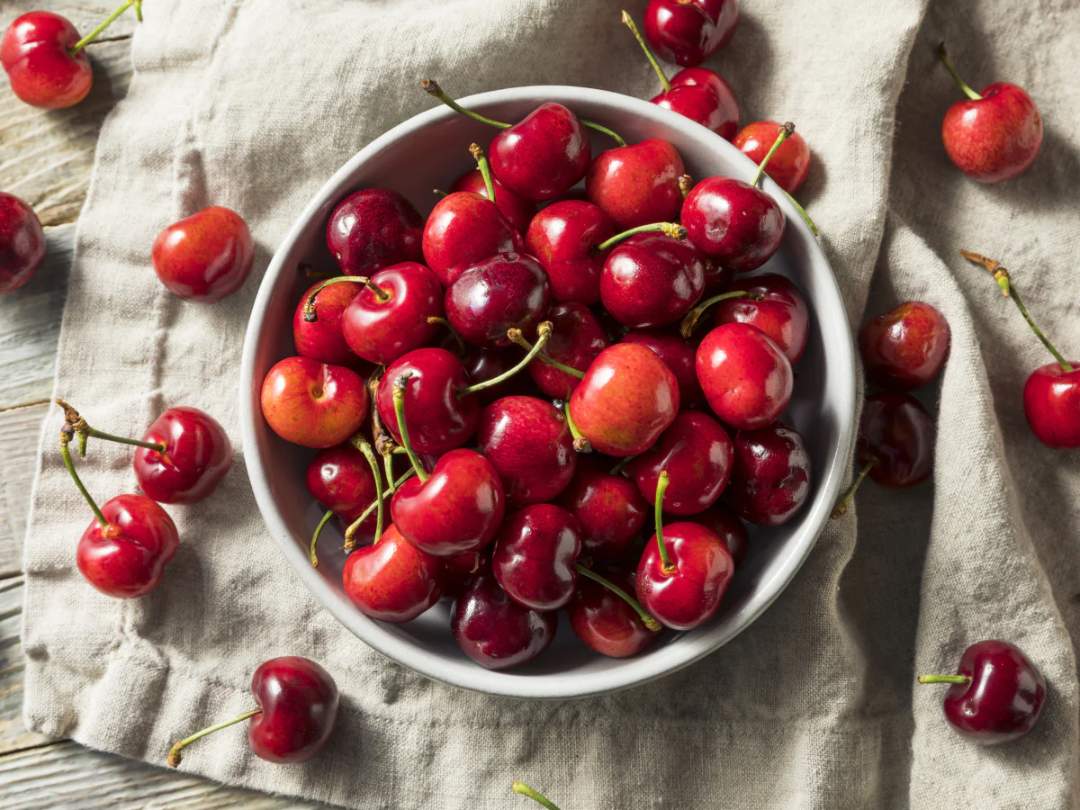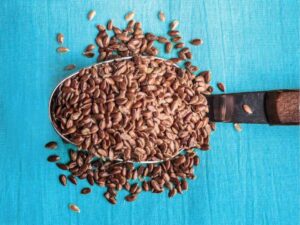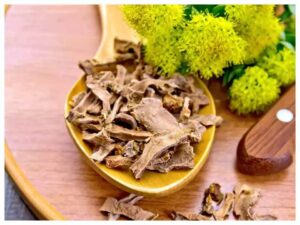The Discovery of Saposhnikovia: Uncovering the Roots of an Ancient Medicinal Herb
The Mysterious Beginnings of Saposhnikovia
The history of Saposhnikovia dates back thousands of years, and its discovery can be traced back to ancient China. This medicinal herb is native to the regions of China, Korea, and Japan, where it has been used for centuries to treat a wide range of ailments.
The first recorded mention of Saposhnikovia in Chinese literature dates back to the Tang dynasty (618-907 AD), where it was described as a powerful remedy for various conditions, such as colds, fever, and pain. In traditional Chinese medicine, Saposhnikovia is known as Fang Feng, which means “guard against wind.” The Chinese believed that wind was responsible for many illnesses, and Saposhnikovia was used to protect the body from this harmful element.
The Discovery of Saposhnikovia’s Medicinal Properties
Despite its long history of use in traditional medicine, it wasn’t until the early 20th century that Saposhnikovia’s medicinal properties were scientifically studied. In 1911, a Russian botanist named Boris Alexeevich Fedtschenko discovered a new species of plant in China that he named Saposhnikovia divaricata, after the Russian botanist Dmitry Ivanovich Saposhnikov.
Fedtschenko was studying the flora of the Gansu Province in northwestern China when he came across this unusual plant. He was immediately struck by its distinctive aroma, which he described as “pungent and spicy.” Fedtschenko collected samples of the plant and sent them back to Russia for further analysis.
The first scientific study of Saposhnikovia was conducted by a Russian pharmacologist named N. N. Anichkov in 1916. Anichkov was intrigued by the plant’s unique fragrance and decided to investigate its medicinal properties. He discovered that Saposhnikovia contained a number of compounds that had anti-inflammatory, antimicrobial, and antitumor properties.
Saposhnikovia’s Journey to the West
In the early 20th century, Chinese medicine was largely unknown in the West. However, with the discovery of Saposhnikovia’s medicinal properties, the plant began to gain attention from Western scientists and doctors. In the 1920s and 1930s, Saposhnikovia was introduced to Europe and North America, where it quickly gained a reputation as a potent natural remedy.
One of the first Western scientists to study Saposhnikovia was the American botanist Frank N. Meyer. Meyer was a plant explorer for the United States Department of Agriculture, and in 1918, he was sent to China to collect specimens of plants that might be of interest to American farmers. During his travels, Meyer came across Saposhnikovia and was intrigued by its medicinal properties. He collected samples of the plant and sent them back to the United States for further study.
Saposhnikovia in Modern Medicine
Today, Saposhnikovia is widely used in both traditional and modern medicine. In traditional Chinese medicine, it is still used to treat a wide range of conditions, including colds, fever, headaches, and joint pain. In modern medicine, Saposhnikovia has been studied for its anti-inflammatory, antimicrobial, and antitumor properties, and it is used to treat conditions such as arthritis, allergies, and asthma.
One of the most promising areas of research for Saposhnikovia is its potential use in cancer treatment. Several studies have found that compounds in Saposhnikovia have antitumor properties and may be effective in slowing the growth and spread of cancer cells. One study published in the journal Oncotarget found that a compound called costunolide, which is found in Saposhnikovia, was able to inhibit the growth of breast cancer cells in vitro and in vivo. Another study published in the journal Frontiers in Pharmacology found that a combination of Saposhnikovia and another Chinese herb called Astragalus membranaceus was able to enhance the effectiveness of chemotherapy in treating liver cancer.
In addition to its potential use in cancer treatment, Saposhnikovia has also been studied for its anti-inflammatory properties. Inflammation is a natural response to injury or infection, but chronic inflammation can lead to a range of health problems, including heart disease, diabetes, and Alzheimer’s disease. Several studies have found that Saposhnikovia contains compounds that are able to reduce inflammation in the body, making it a potentially useful treatment for chronic inflammatory conditions.
Saposhnikovia has also been studied for its potential use in treating allergies and asthma. In traditional Chinese medicine, Saposhnikovia is used to treat conditions that are caused by wind, including respiratory conditions like asthma. Several studies have found that Saposhnikovia contains compounds that are able to reduce inflammation in the airways, making it a potentially useful treatment for asthma and other respiratory conditions.
Despite its long history of use in traditional medicine and promising results in modern research, Saposhnikovia is still not widely known in the West. However, as more research is conducted on this fascinating plant, it is likely to gain wider recognition as a potent natural remedy for a wide range of conditions.
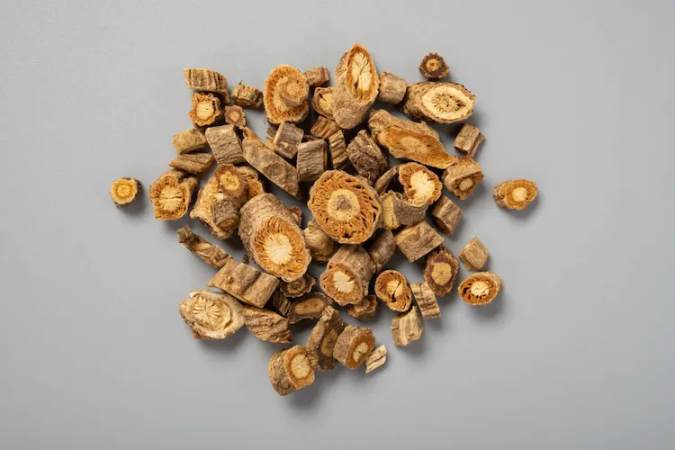
The Benefits of Saposhnikovia: Exploring the Potential of an Ancient Medicinal Herb
What is Saposhnikovia?
Saposhnikovia is a plant species that belongs to the Apiaceae family. It is also known as “fang feng” in traditional Chinese medicine, which means “guard against wind.” Saposhnikovia is native to the regions of China, Korea, and Japan and has been used for centuries in traditional medicine to treat a wide range of ailments.
Saposhnikovia is a perennial plant that grows up to 2 meters tall. It has a distinctive aroma that is described as pungent and spicy, and its roots are the part of the plant that is used for medicinal purposes.
Anti-inflammatory Properties of Saposhnikovia
One of the most well-studied benefits of Saposhnikovia is its anti-inflammatory properties. Inflammation is a natural response to injury or infection, but chronic inflammation can lead to a range of health problems, including heart disease, diabetes, and Alzheimer’s disease.
Several studies have found that Saposhnikovia contains compounds that are able to reduce inflammation in the body. One study published in the journal Planta Medica found that a compound called paeoniflorin, which is found in Saposhnikovia, was able to reduce inflammation in a mouse model of rheumatoid arthritis. Another study published in the journal PLoS One found that Saposhnikovia was able to reduce inflammation in a mouse model of allergic asthma.
These findings suggest that Saposhnikovia may be a useful natural remedy for a range of inflammatory conditions.
Antimicrobial Properties of Saposhnikovia
In addition to its anti-inflammatory properties, Saposhnikovia also has antimicrobial properties. Several studies have found that Saposhnikovia contains compounds that are able to kill or inhibit the growth of a wide range of bacteria and fungi.
One study published in the Journal of Natural Products found that a compound called dehydrofalcarinol, which is found in Saposhnikovia, was able to kill the bacteria that causes acne. Another study published in the journal Phytotherapy Research found that Saposhnikovia was able to inhibit the growth of the bacteria that causes Lyme disease.
These findings suggest that Saposhnikovia may be a useful natural remedy for a range of bacterial and fungal infections.
Antitumor Properties of Saposhnikovia
Another area of research interest for Saposhnikovia is its potential use in cancer treatment. Several studies have found that compounds in Saposhnikovia have antitumor properties and may be effective in slowing the growth and spread of cancer cells.
One study published in the journal Oncotarget found that a compound called costunolide, which is found in Saposhnikovia, was able to inhibit the growth of breast cancer cells in vitro and in vivo. Another study published in the journal Frontiers in Pharmacology found that a combination of Saposhnikovia and another Chinese herb called Astragalus membranaceus was able to enhance the effectiveness of chemotherapy in treating liver cancer.
These findings suggest that Saposhnikovia may be a promising natural remedy for cancer treatment.
Benefits of Saposhnikovia for Specific Health Conditions
Arthritis
Saposhnikovia has been studied for its potential use in treating arthritis, a condition characterized by inflammation of the joints. Several studies have found that Saposhnikovia contains compounds that are able to reduce inflammation in the joints, making it a potentially useful treatment for arthritis.
One study published in the journal Evidence-Based Complementary and Alternative Medicine found that a combination of Saposhnikovia and another Chinese herb called Lonicera japonica was able to reduce joint inflammation and improve joint function in a rat model of arthritis. Another study published in the Journal of Ethnopharmacology found that a compound called falcarindiol, which is found in Saposhnikovia, was able to reduce joint inflammation in a mouse model of arthritis.
Allergies and Asthma
Saposhnikovia has been used in traditional Chinese medicine to treat conditions that are caused by wind, including respiratory conditions like asthma. Several studies have found that Saposhnikovia contains compounds that are able to reduce inflammation in the airways, making it a potentially useful treatment for asthma and other respiratory conditions.
One study published in the journal BMC Complementary and Alternative Medicine found that a compound called umbelliferone, which is found in Saposhnikovia, was able to reduce airway inflammation in a mouse model of asthma. Another study published in the journal PLoS One found that Saposhnikovia was able to reduce airway inflammation in a mouse model of allergic asthma.
Skin Conditions
Saposhnikovia has also been studied for its potential use in treating skin conditions like acne and eczema. Several studies have found that compounds in Saposhnikovia have antimicrobial and anti-inflammatory properties that may be beneficial for treating these conditions.
One study published in the Journal of Natural Products found that a compound called dehydrofalcarinol, which is found in Saposhnikovia, was able to kill the bacteria that causes acne. Another study published in the Journal of Ethnopharmacology found that a compound called psoralen, which is also found in Saposhnikovia, was able to reduce inflammation in a mouse model of eczema.
How to Use Saposhnikovia
Saposhnikovia is available in a variety of forms, including dried root, powder, and capsules. It can also be used topically in the form of creams or ointments.
In traditional Chinese medicine, Saposhnikovia is often combined with other herbs to create a formula that is tailored to the individual’s specific health needs. If you are interested in using Saposhnikovia, it is best to consult with a licensed practitioner of traditional Chinese medicine who can recommend a formula that is right for you.
Conclusion
Saposhnikovia is a fascinating plant with a long history of use in traditional medicine. Its roots contain compounds that have anti-inflammatory, antimicrobial, and antitumor properties, making it a potentially useful natural remedy for a wide range of health conditions.
While more research is needed to fully understand the benefits of Saposhnikovia, the studies conducted so far suggest that this ancient medicinal herb may hold promise as a natural treatment for conditions like arthritis, allergies, and cancer. If you are interested in using Saposhnikovia, be sure to consult with a healthcare provider to determine if it is appropriate for you.

The Nutritional Components and Core Ingredients of Saposhnikovia: A Comprehensive Guide
Saposhnikovia is a plant species that is native to China, Korea, and Japan. It has been used in traditional medicine for centuries to treat a wide range of ailments, and its roots contain a variety of nutritional components and core ingredients that make it a valuable natural remedy.
In this article, we will explore the nutritional components and core ingredients of Saposhnikovia in detail.
Saposhnikovia contains a range of nutritional components that are beneficial for human health. These include:
Vitamins and Minerals
Saposhnikovia is a good source of vitamins and minerals, including vitamin C, vitamin E, calcium, and iron. These nutrients are essential for a healthy immune system, strong bones, and overall health and wellbeing.
Essential Oils
Saposhnikovia contains a number of essential oils, which are aromatic compounds that are extracted from the plant. These oils have a wide range of health benefits, including anti-inflammatory, antimicrobial, and antitumor properties.
Flavonoids
Flavonoids are a group of plant compounds that have antioxidant properties. They are found in many fruits, vegetables, and herbs, including Saposhnikovia. Flavonoids have been shown to reduce inflammation in the body, improve heart health, and protect against cancer.
Polysaccharides
Polysaccharides are complex carbohydrates that are found in many plants, including Saposhnikovia. These compounds have been shown to have immune-boosting properties and may be useful in the treatment of cancer and other diseases.
Core Ingredients of Saposhnikovia
In addition to its nutritional components, Saposhnikovia contains a number of core ingredients that make it a valuable natural remedy for a wide range of health conditions. These include:
Paeoniflorin
Paeoniflorin is a compound that is found in many plants, including Saposhnikovia. It has been shown to have anti-inflammatory and analgesic properties and may be useful in the treatment of conditions like arthritis and chronic pain.
Dehydrofalcarinol
Dehydrofalcarinol is a compound that is found in Saposhnikovia and other plants in the Apiaceae family. It has antimicrobial properties and may be useful in the treatment of conditions like acne and other skin infections.
Costunolide
Costunolide is a compound that is found in Saposhnikovia and other plants in the Asteraceae family. It has been shown to have antitumor properties and may be useful in the treatment of cancer.
Umbelliferone
Umbelliferone is a compound that is found in many plants, including Saposhnikovia. It has been shown to have anti-inflammatory and antioxidant properties and may be useful in the treatment of conditions like asthma and other respiratory diseases.
Methods for Consuming Saposhnikovia: A Guide to Using This Ancient Medicinal Herb
Introduction
Saposhnikovia is a plant species that is native to China, Korea, and Japan. It has been used in traditional medicine for centuries to treat a wide range of ailments. The roots of the plant contain a variety of nutritional components and core ingredients that make it a valuable natural remedy.
In this article, we will explore the different methods for consuming Saposhnikovia.
Dried Root
One of the most common ways to consume Saposhnikovia is in the form of dried root. The dried root can be purchased at health food stores and online retailers. To use dried root, it is typically brewed in hot water to make a tea.
To make Saposhnikovia tea, add 1-2 teaspoons of dried root to a cup of hot water and let it steep for 10-15 minutes. The tea can be consumed up to three times per day.
Powder
Saposhnikovia is also available in the form of a powder, which can be added to smoothies, juices, or other beverages. To use Saposhnikovia powder, simply add 1-2 teaspoons to your favorite beverage and stir until it is well combined.
Capsules
Saposhnikovia is also available in the form of capsules, which can be taken orally. Capsules are a convenient way to consume Saposhnikovia, as they are easy to take and do not require any preparation.
To use Saposhnikovia capsules, follow the instructions on the package. Typically, capsules are taken one to three times per day.
Creams and Ointments
Saposhnikovia can also be used topically in the form of creams and ointments. These products are typically used to treat skin conditions like acne and eczema.
To use Saposhnikovia cream or ointment, apply a small amount to the affected area and massage it into the skin. Repeat as needed.
Combination Formulas
In traditional Chinese medicine, Saposhnikovia is often combined with other herbs to create a formula that is tailored to the individual’s specific health needs. These formulas may be available in the form of teas, powders, capsules, or other forms.
If you are interested in using a combination formula that contains Saposhnikovia, it is best to consult with a licensed practitioner of traditional Chinese medicine who can recommend a formula that is right for you.
Precautions
While Saposhnikovia is generally considered safe, there are some precautions to keep in mind.
First, Saposhnikovia may interact with certain medications, so it is important to discuss any potential interactions with your healthcare provider.
Second, Saposhnikovia may cause side effects in some people, including stomach upset, diarrhea, and skin irritation. If you experience any side effects while using Saposhnikovia, discontinue use and consult with a healthcare provider.
Finally, pregnant and breastfeeding women should avoid using Saposhnikovia, as its safety in these populations has not been established.
Conclusion
Saposhnikovia is a valuable natural remedy that has been used for centuries in traditional medicine to treat a wide range of ailments. It is available in a variety of forms, including dried root, powder, capsules, creams, and ointments.
If you are interested in using Saposhnikovia, it is important to consult with a healthcare provider to determine if it is appropriate for you. As with any natural remedy, it is important to use Saposhnikovia safely and responsibly.
Potential Side Effects and When to Avoid Taking Saposhnikovia
While Saposhnikovia is generally considered safe, there are some potential side effects to be aware of. These include:
Stomach Upset
Saposhnikovia may cause stomach upset in some people. This can manifest as nausea, vomiting, or diarrhea. If you experience stomach upset while using Saposhnikovia, discontinue use and consult with a healthcare provider.
Skin Irritation
Saposhnikovia may cause skin irritation in some people. This can manifest as itching, redness, or a rash. If you experience skin irritation while using Saposhnikovia cream or ointment, discontinue use and consult with a healthcare provider.
Interaction with Medications
Saposhnikovia may interact with certain medications, including blood thinners, antiplatelet drugs, and nonsteroidal anti-inflammatory drugs (NSAIDs). If you are taking any medications, it is important to discuss potential interactions with your healthcare provider before using Saposhnikovia.
